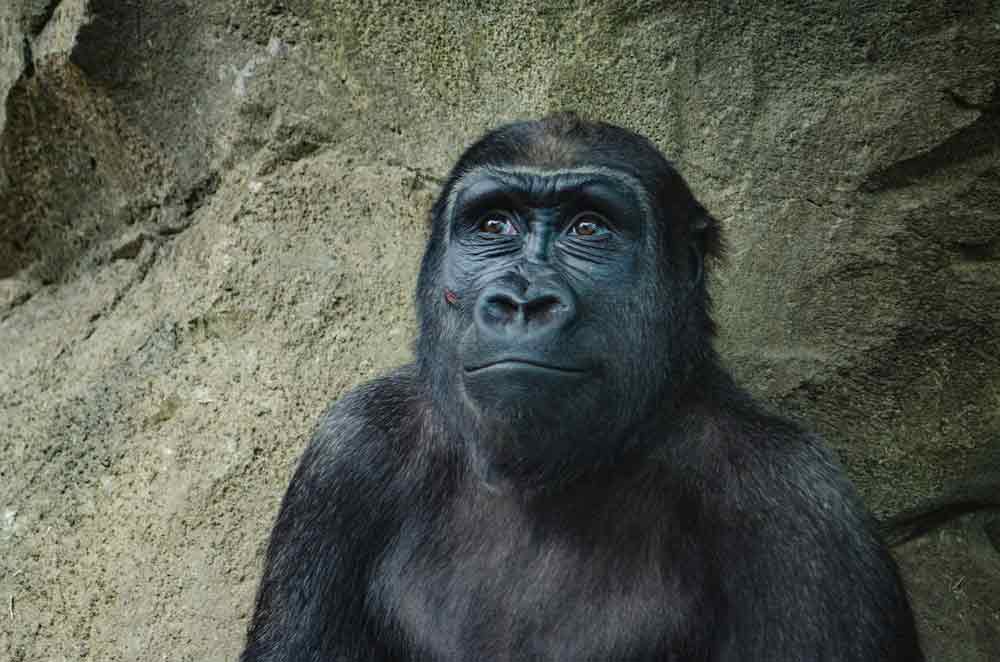
Archaeoindris is a giant lemur species and the largest given primate known to live in Madagascar. This is original in the size of a manly goon and belongs to the family of defunct lemurs known as “ sloth lemurs ”. The alternate– largest type of idleness lemur and it was first described by Herbert F in 1909 which is completely grounded on subfossil partial jaws. Experimenters have set up only six bones from the lower. The unique part is that the remains have been seen only in one position Ampasambazimba in a subfossil point in central Madagascar.
Archaeoindris fontoynontii is an defunct giant lemur and the largest primate known to have evolved on Madagascar, similar in size to a manly goon. It belonged to a family of defunct lemurs known as” sloth lemurs”( Palaeopropithecidae) and, because of its extremely large size, it has been compared to the ground inertia that formerly floated North and South America. It was most nearly related to Palaeopropithecus, the second largest type of idleness lemur. Along with the other idleness lemurs, Archaeoindris was related to the living indri, sifakas, and woolly lemurs, as well as the lately defunct monkey lemurs( Archaeolemuridae). The rubric, Archaeoindris, translates to” ancient indri- suchlike lemur”, indeed though it presumably came defunct lately, around 350 BCE. Archaeoindris was first described by HerbertF. Standing in 1909 grounded on subfossil partial jaws, although Charles Lamberton latterly discovered a complete cranium. Only six bones from the lower shell have been set up and excavations in the 1980s offered no leads for new discoveries. Its remains have been set up at only one position Ampasambazimba, a subfossil point in central Madagascar.
Following its original discovery, some subfossil remains of Megaladapis grandidieri( a type of defunct koala lemur) were inaptly associated with Archaeoindris, while lower leg bones from a juvenile and a massive adult leg bone were inaptly assumed to belong to two separate species. These crimes were gradationally corrected between the 1930s and 1980s. The shell of Archaeoindris was massive and robust, and participated numerous traits with that of Palaeopropithecus. The arms were longer than the legs, but no hand or bottom bones have been set up for comparison with the other idleness lemurs. Size estimates grounded on the limited remains have varied extensively, ranging as high as 244 kilograms( 538 pounds), but the most thorough statistical disquisition using retrogression analyses predicts a mass of 160 kg( 350 lb). Misattributions and limited remains have redounded in varying opinions about the way Archaeoindris moved in its terrain, ranging from tree- dwelling to ground- lodging.
Its shell suggests it was a deliberate rambler that visited the ground to travel. The diet of Archaeoindris was substantially leaves, and its niche — previous to mortal appearance was a blend of woods, bushlands, and champaign, rich in lemur diversity. moment, the region is dominated by champaigns and lemur diversity is veritably low in the nearest defended area, Ambohitantely Special Reserve. Although it was a rare lemur, it was still extant when humans first arrived on Madagascar, and it would have been vulnerable to stalking and niche loss. Etymology The general name Archaeoindris, meaning” ancient indri- suchlike lemur”, is deduced from the Greek word ἀρχαῖος( archaios, or” ancient”) and indris, a common variation of the general name Indri. The species name, fontoynontii( occasionally spelled fontoynonti), was named in honor of Antoine Maurice Fontoynont, the chairman of the Académie Malgache( Malagasy Academy) at the time.
Fontoynont was reported to have been supervising the excavation when it was discovered. Archaeoindris was most nearly related to Palaeopropithecus, a rubric containing the second largest of the idleness lemurs and specialized for suspensory geste
in its arboreal niche. Traits of the postcranium( shell below the cranium) indicate that Babakotia was the coming most nearly affiliated idleness lemur to Archaeoindris and Palaeopropithecus, followed by Mesopropithecus, the lowest of the idleness lemurs. All four rubrics of sloth lemurs are known to be a family taxon( close cousins) of family Indriidae, which includes the indri( Indri), sifakas( Propithecus), and woolly lemurs( Avahi). This relationship is supported by data from morphological, experimental, and molecular exploration.
Another member of this clade( related group) is the family of monkey lemurs( Archaeolemuridae). Dental features, similar as the morphology of their molar teeth and the modified number of teeth in their toothcomb( a technical grooming structure set up in lemuriforms), have long suggested a relationship. still, other anatomical and experimental traits suggested that monkey lemurs might be more nearly affiliated to family Lemuridae, which include five rubrics of lemur, including the ring- tagged lemur( Lemur catta). Molecular analysis has shown strong support for the former, placing the monkey lemurs in a clade with the idleness lemurs and indriids. Distribution and niche Archaeoindris is known from only one subfossil point, Ampasambazimba, in central Madagascar, and all remains date to the Late Quaternary.
The area moment is dominated by champaigns, particularly of the lawn genus Aristida. previous to mortal appearance, the area around Ampasambazimba wasn’t fully forested, but further of an open niche, conforming of a blend of woods, bushlands, and champaign. Beast remains at this subfossil point have yielded about 20 species of lemur living in sympatry( participating the same geographic area). In comparison, the near Ambohitantely Special Reserve moment contains only four species, roughly 20 of the area’s original lemur diversity extermination Despite being the utmost species-rich family among the giant lemurs, all four rubrics of idleness lemur, including Archaeoindris, have gone defunct. Radiocarbon courting of the stratigraphic position of some of the Archaeoindris remains were dated to 8000 BP, while two other samples were dated to 2362 – 2149 BP( 412 – 199 BCE) and 2711 – 2338 BP( 761 – 388 BCE). From these dates, it’s likely that Archaeoindris was still alive on the high table in 350 BCE when the first humans reached the west seacoast of Madagascar, despite being rare by that time. Accordingly, it would have been especially vulnerable to stalking and niche loss.
